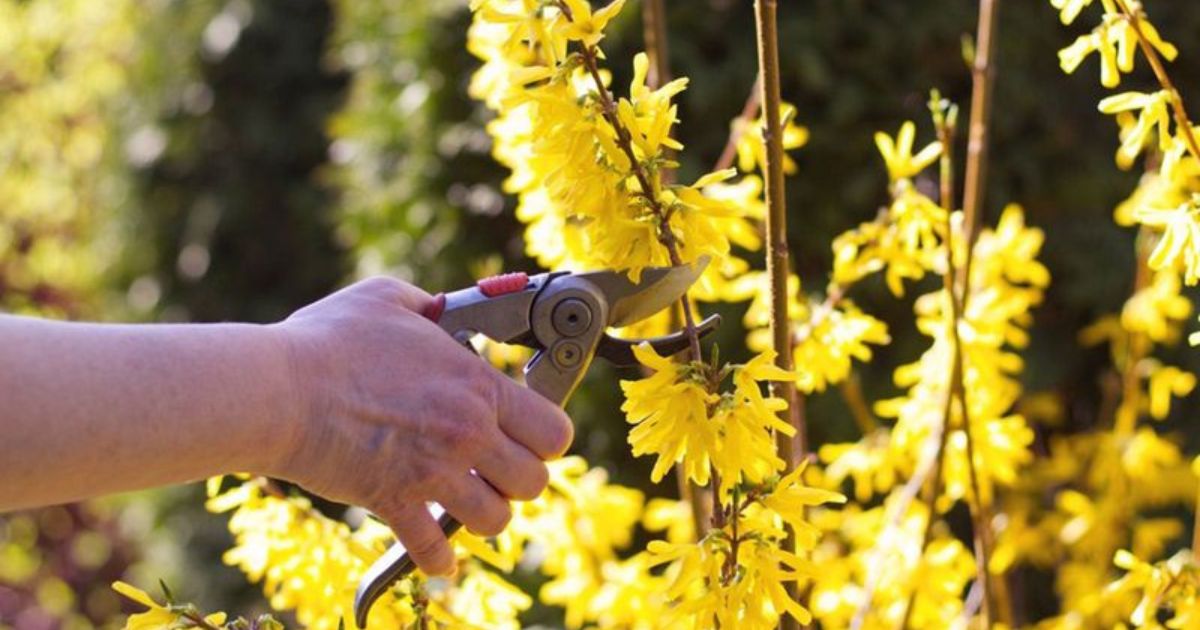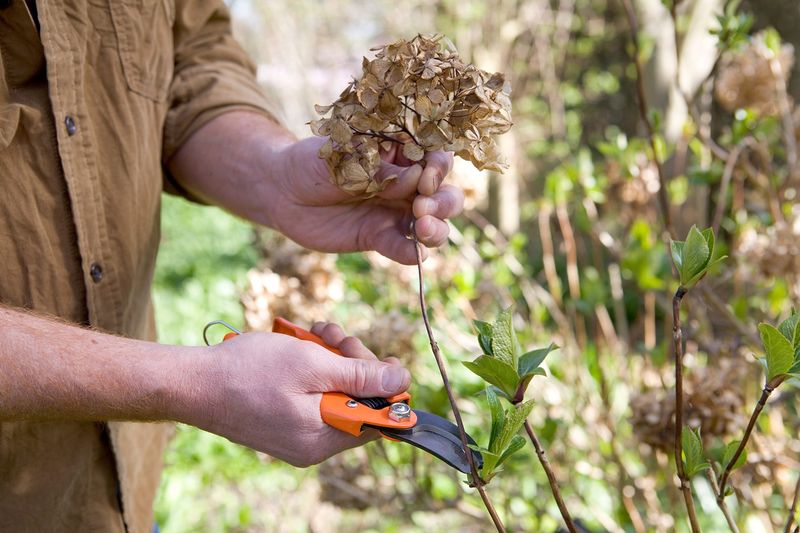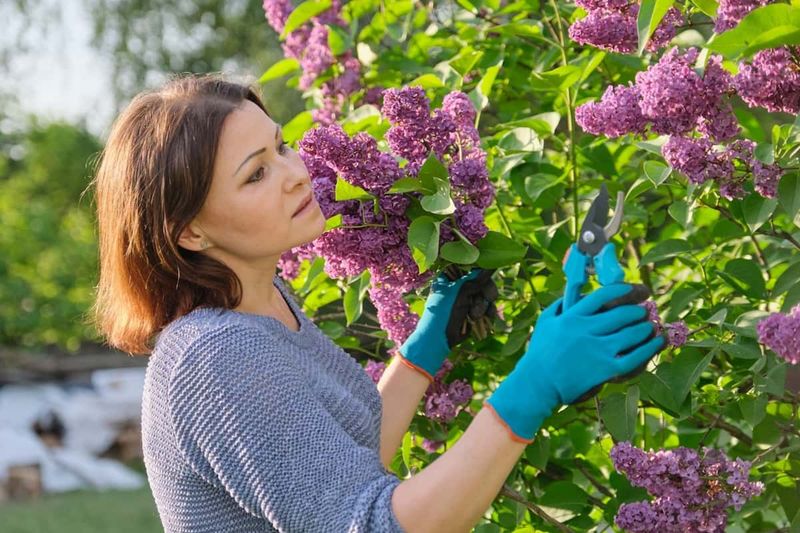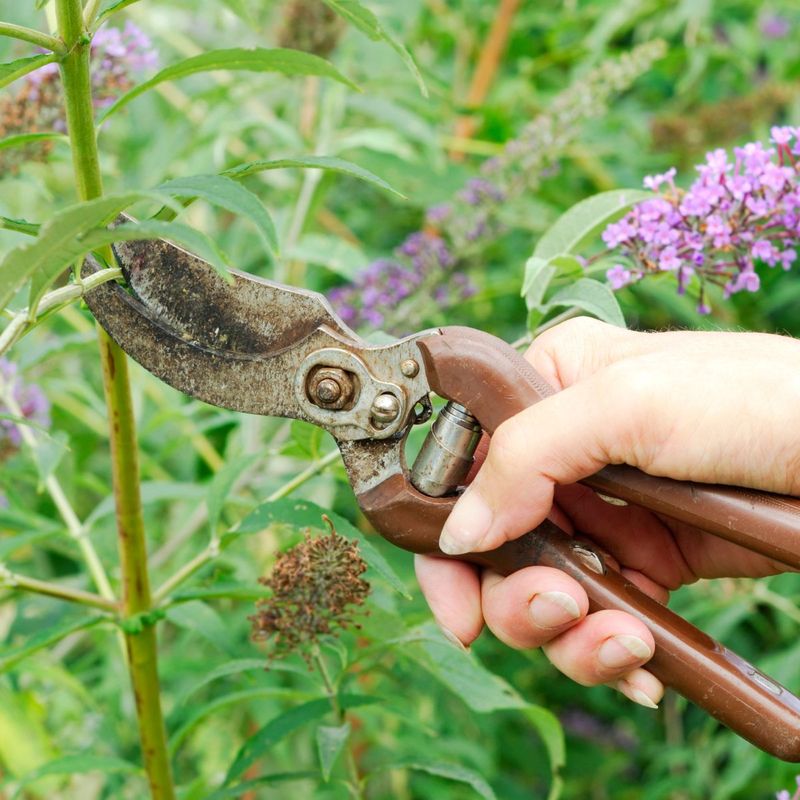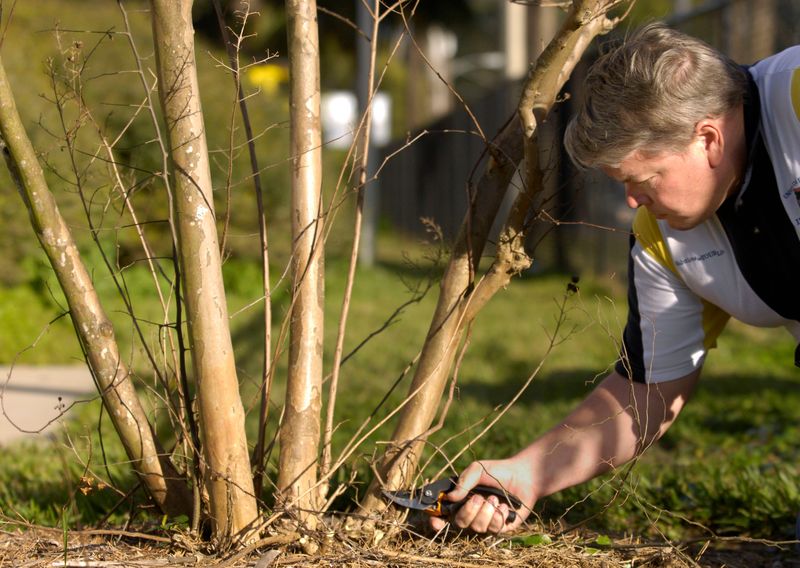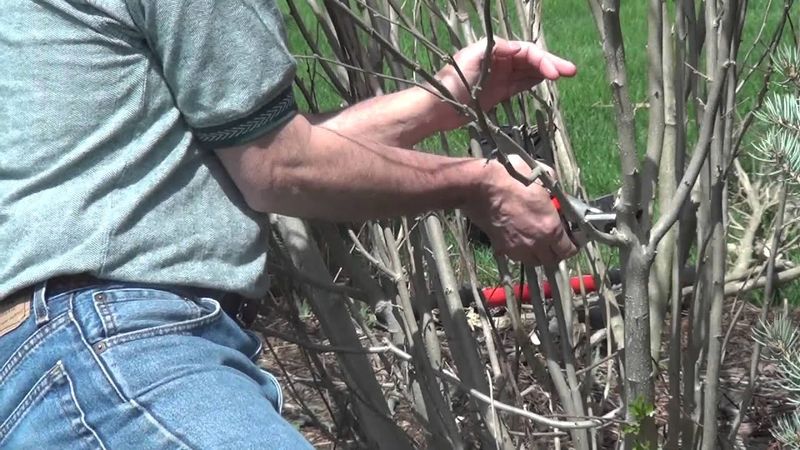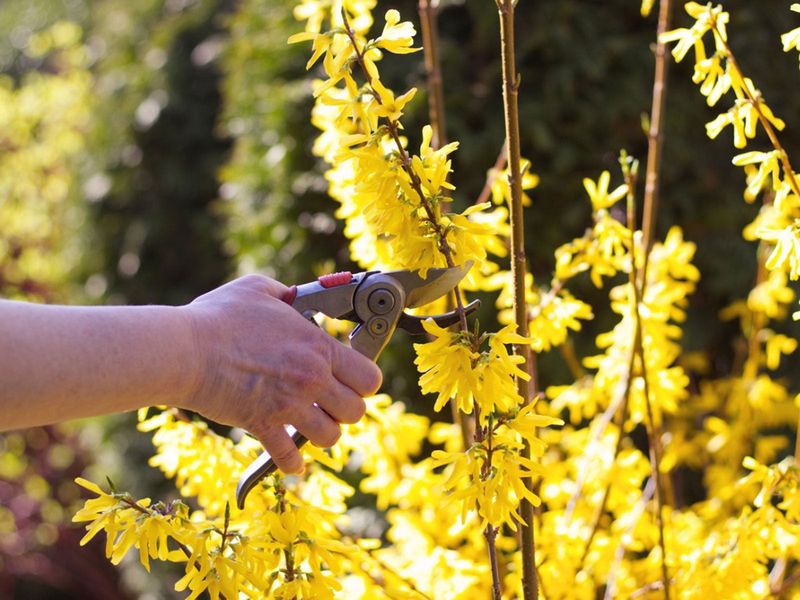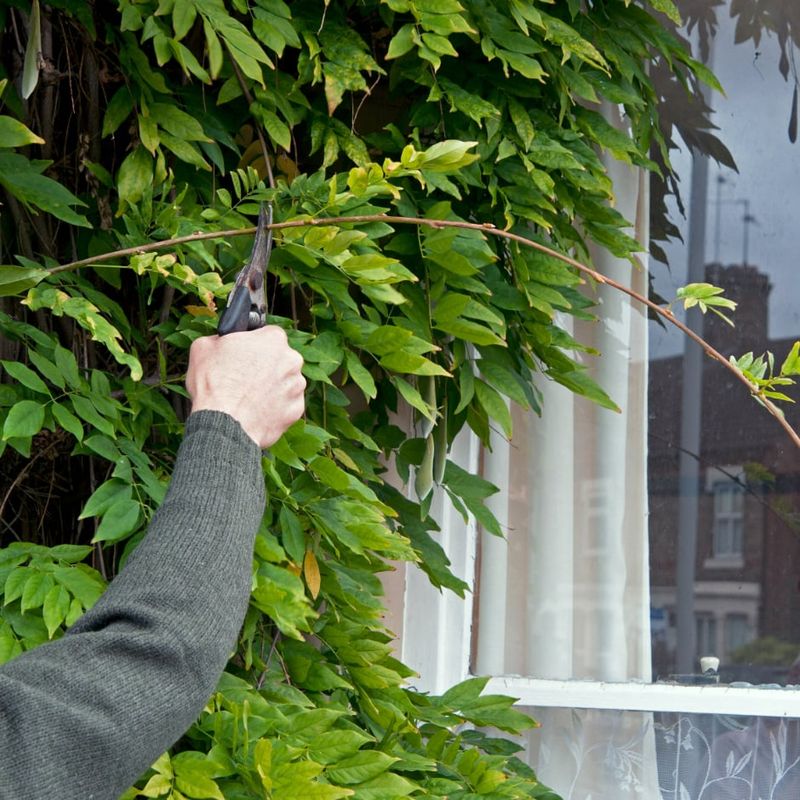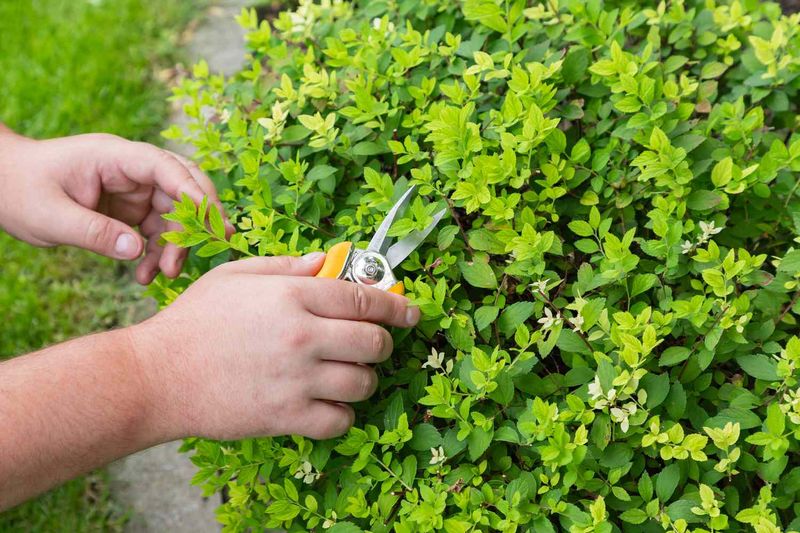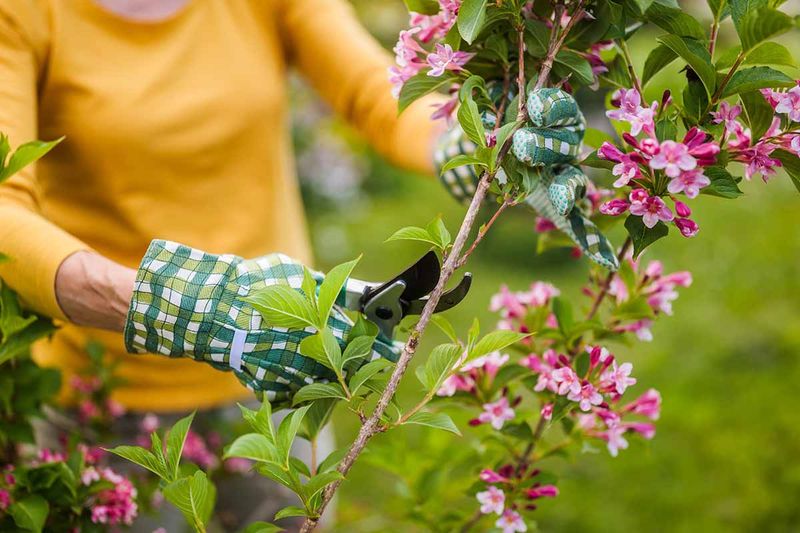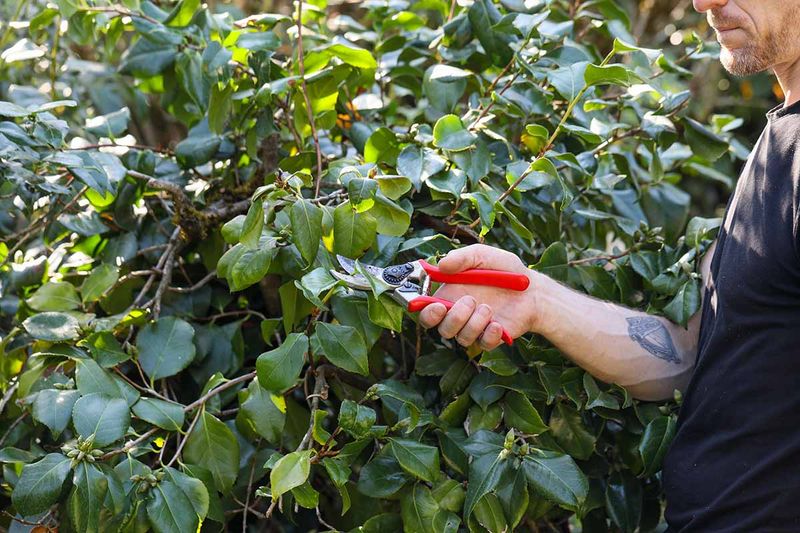Pruning flowering shrubs before the end of winter is crucial to ensure they produce the maximum number of blooms in the coming season.
By cutting back dead or overgrown branches, you encourage new growth and help shape the structure of the plant.
Here, we explore ten essential shrubs that benefit greatly from timely pruning.
1. Hydrangeas
Hydrangeas are a popular choice for gardeners due to their vibrant blooms. Pruning them before winter ends can increase their flower production. Trim back the old wood but ensure not to cut new buds.
This helps in shaping the plant and promoting healthy growth. Remove any dead or diseased branches. Regular pruning keeps the plant vigorous and enhances its floral display.
Use clean, sharp tools for precise cuts. Hydrangeas thrive with a little attention, rewarding gardeners with magnificent blooms come spring. This practice ensures a healthy plant structure and beautiful garden aesthetics.
2. Lilacs
Lilacs are cherished for their intoxicating fragrance and lovely flowers. Pruning them before winter’s end encourages fuller blooms. Focus on removing dead or weak branches to promote air circulation.
Cut back overgrown stems to maintain shape. This process invigorates the plant, leading to a more robust floral display. Use sharp tools to make clean cuts, avoiding damage to the plant.
Pruning also ensures that sunlight reaches all parts of the lilac, further enhancing its growth. With careful pruning, lilacs become a standout in any garden during spring.
3. Butterfly Bush
Butterfly Bushes are known for attracting butterflies with their fragrant flowers. Pruning them in late winter promotes vigorous growth and abundant blooms. Cut back old wood to encourage new shoots, focusing on shaping the plant.
This helps in maintaining a tidy appearance and increases flower yield. Remove any deadwood or damaged branches. Pruning ensures the bush remains healthy and well-structured.
For best results, use clean, sharp pruning tools. With timely pruning, Butterfly Bushes become a vibrant addition to gardens, offering visual appeal and supporting local pollinators.
4. Crape Myrtle
Crape Myrtles are a favorite for their long-lasting blooms. Pruning them before winter ends boosts flower production. Focus on removing spindly or crossing branches to improve air flow and sunlight penetration.
Trim back to a desired shape, ensuring strong, healthy shoots. This encourages a robust framework for growth. Proper pruning results in a more beautiful and floriferous display.
Use sharp tools for precise cuts, avoiding tearing the bark. Crape Myrtles respond well to this care, showcasing stunning flowers throughout the warmer months. Their beauty is accentuated with thoughtful pruning.
5. Rose of Sharon
Rose of Sharon is loved for its large, showy blooms. Pruning before winter ends is essential for maximizing flower production. Focus on cutting back leggy branches to maintain a compact shape.
Remove any dead or damaged wood. This controls the plant’s size while encouraging new growth. Pruning enhances air circulation and light access, vital for vibrant blooms. Use clean, sharp shears to avoid plant stress.
Regular pruning results in a healthier, more attractive plant. Rose of Sharon, with proper care, becomes a highlight in the summer garden, offering lush flowers.
6. Forsythia
Forsythia is among the first to bloom in spring, with bright yellow flowers. Pruning it before winter ends maximizes its floral display. Trim back old wood to promote vigorous flowering.
Focus on shaping the plant for a neat appearance. Remove any weak or crossed branches to enhance growth. This ensures a healthy structure and abundant blooms. Use sharp tools for clean cuts, which helps in preventing disease.
Forsythia benefits greatly from regular pruning, becoming a cheerful sight come springtime. Its early blooms are a delightful herald of warmer days ahead.
7. Wisteria
Wisteria is known for its stunning, cascading flowers. Pruning it before winter ends helps control its vigorous growth. Focus on cutting back long tendrils to prevent overgrowth.
Trim back to two or three buds on each shoot to encourage flowering. This keeps the plant tidy and manageable. Remove any dead or weak wood for better health. Use sharp tools for precise work, ensuring clean cuts.
Regular pruning results in an impressive floral display. Wisteria responds well to this care, rewarding gardeners with breathtaking blooms cascading from arbors and trellises.
8. Spirea
Spirea bushes offer a burst of color with their blooms. Pruning them before winter ends is crucial for enhancing their flowering potential. Cut back old wood to stimulate new growth.
Focus on removing weak or damaged branches for better plant health. This maintains a compact shape and encourages more blooms. Use sharp shears for clean cuts, reducing plant stress.
Spirea benefits from this regular attention, becoming a vibrant garden feature. The result is a lush, floriferous display that captivates with its rich colors. Proper pruning leads to a spectacular spring showcase.
9. Weigela
Weigela is prized for its colorful blooms and arching branches. Pruning before winter ends is key to its floral success. Remove old wood to promote new shoot growth. This encourages a fuller, more vibrant display.
Focus on shaping the plant by cutting back overgrown sections. This ensures sunlight reaches all parts of the plant. Use sharp, clean tools to make precise cuts. Regular pruning improves air circulation and overall plant health.
Weigela, with proper care, becomes a showstopper in any garden. Its blooms provide a burst of color that delights throughout the season.
10. Camellia
Camellias are admired for their lush blooms and glossy leaves. Pruning them before winter ends enhances their growth and flowering potential. Focus on removing dead or weak branches to improve structure.
Trim lightly to maintain shape, avoiding heavy cuts. This encourages healthy growth and better blooms. Use clean tools to prevent disease transmission. Pruning helps in controlling the size and shape of the plant.
Camellias respond well to careful attention, offering a profusion of flowers in spring. With proper care, they become an elegant addition to any garden landscape.
